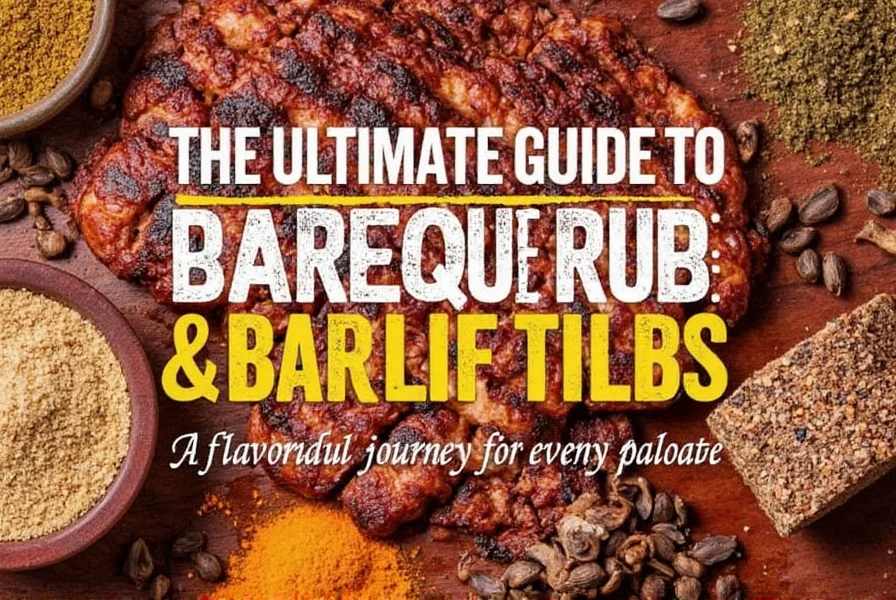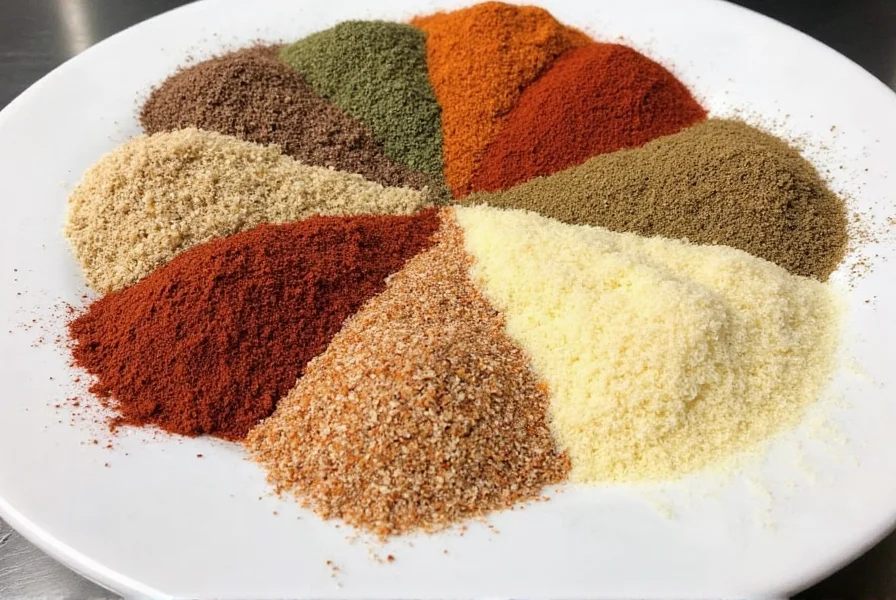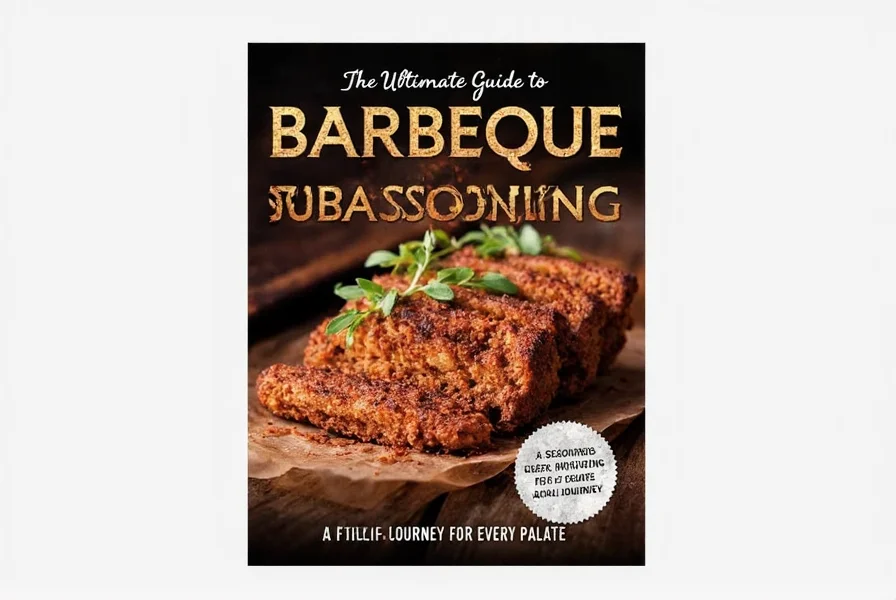Table of Contents
Introduction to Homemade BBQ Rub
Homemade BBQ rub transforms ordinary meat into extraordinary flavor with simple ingredients and precise technique. Unlike store-bought blends, creating your own rub gives you complete control over flavor profiles, ingredient quality, and dietary preferences. This guide provides the foundational knowledge and actionable steps to craft perfect BBQ rubs for any protein.

Essential Ingredients for BBQ Rub
Every great BBQ rub starts with these core components, each serving a specific purpose:
- Salt (1-2 tsp per cup): Enhances natural flavors and aids moisture retention. Use kosher salt for even distribution.
- Sugar (1-3 tbsp per cup): Promotes caramelization and balances heat. Brown sugar adds depth, while white sugar provides cleaner sweetness.
- Paprika (1-2 tbsp per cup): Provides vibrant color and mild sweetness. Smoked paprika adds authentic barbecue depth.
- Garlic Powder (1 tsp per cup): Delivers savory umami without burning like fresh garlic.
- Onion Powder (1 tsp per cup): Complements garlic with sweet, earthy notes.
- Black Pepper (1-2 tsp per cup): Adds subtle heat and complexity. Freshly ground is best.
These foundational ingredients form the base for all custom blends. Adjust ratios based on meat type and desired flavor profile.
Step-by-Step Homemade BBQ Rub Recipe
Follow this simple method to create versatile, restaurant-quality BBQ rub in minutes:
- Measure Ingredients: Use a kitchen scale for precision. For a standard batch (makes 1 cup):
- 1/4 cup brown sugar
- 2 tbsp paprika (smoked or sweet)
- 1 tbsp garlic powder
- 1 tbsp onion powder
- 1 tbsp kosher salt
- 2 tsp black pepper
- 1 tsp cayenne pepper (optional for heat)
- Mix Thoroughly: Combine all ingredients in a bowl. Use a whisk or fork to break up clumps and ensure even distribution.
- Test and Adjust: Sprinkle a small amount on cooked chicken and taste. Adjust salt, sugar, or heat levels as needed.
- Store Properly: Keep in an airtight container away from light and moisture. Shelf life: 6 months.

Customizable BBQ Rub Variations
Modify the base recipe for specific meats and cooking styles:
| Variation | Key Adjustments | Best For |
|---|---|---|
| Classic Southern | +1 tbsp mustard powder, +1 tsp celery seed | Pork ribs, chicken |
| Texas-Style Beef Rub | +2 tbsp coarse black pepper, +1 tbsp coffee grounds | Brisket, steaks |
| Caribbean Jerk Rub | +1 tbsp allspice, +1 tsp ground ginger, +1/2 tsp nutmeg | Chicken, shrimp |
| Smoky Maple Rub | Replace brown sugar with maple sugar, +1 tsp liquid smoke (optional) | Pork shoulder, salmon |
How to Apply BBQ Rub Like a Pro
Proper application ensures maximum flavor penetration and crust formation:
- Prepare the Meat: Pat dry with paper towels. Moisture prevents rub adhesion.
- Apply Oil First: Lightly coat meat with neutral oil (canola, vegetable) to help rub stick.
- Season Generously: Use 1-1.5 tablespoons per pound of meat. Rub into all surfaces including edges.
- Resting Time:
- 30-60 minutes for chicken/fish
- 2-4 hours for pork ribs
- Overnight for brisket/whole chickens
- Temperature Check: Bring meat to room temperature before cooking for even heat distribution.

Frequently Asked Questions
How do I adjust BBQ rub for different cooking methods?
For grilling (high heat), reduce sugar content to prevent burning. For smoking (low/long), increase sugar for caramelization. For oven roasting, use the standard recipe. Always apply rub 30+ minutes before cooking regardless of method.
Can I use this rub on vegetables or tofu?
Absolutely! For vegetables, reduce salt by 25% and add smoked paprika for depth. Tofu benefits from a 1:1 oil-to-rub ratio before baking. The base recipe works for plant-based proteins with minor adjustments.
Why does my rub burn during cooking?
Burning usually occurs from excessive sugar in high-heat applications. Solution: Replace brown sugar with coconut sugar (higher burn point) or reduce sugar by 50% for grill temperatures above 400°F. Always keep meat at least 6 inches from direct heat sources.
How do I fix an over-salted rub?
Immediately add equal parts sugar and paprika to balance. For future batches, measure salt precisely using measuring spoons (not teaspoons). Kosher salt is less dense than table salt - use 1.5x more table salt if substituting.
What's the difference between rub and seasoning?
Rubs are coarser blends designed to form a crust on meat surfaces. Seasonings are finer powders meant for mixing with liquids to create sauces. Our recipe creates a true dry rub with proper texture for crust formation.
How long does homemade rub last?
Properly stored in a cool, dark place, homemade rub maintains peak flavor for 6 months. For maximum freshness, make small batches every 2-3 months. Discard if color fades significantly or aroma turns stale.










 浙公网安备
33010002000092号
浙公网安备
33010002000092号 浙B2-20120091-4
浙B2-20120091-4